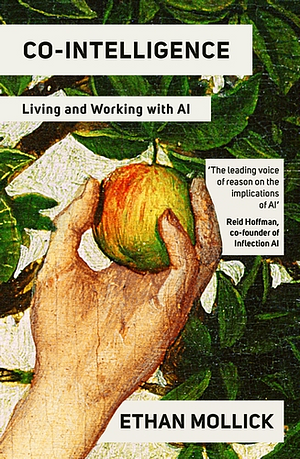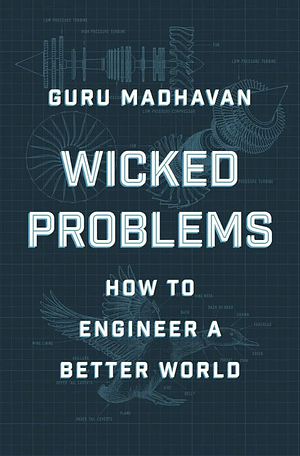Both/And Thinking - Paradox System (Chapter 6)
I’ve started reading Both/And Thinking and am capturing my thoughts here as I go. Right now these are mostly the raw notes as synthesis comes later. You may find it interesting to start with the first post in this series or to read them all.
Continuing with toolbox building, today’s reading, added the concept of becoming emotionally comfortable with the paradoxes. This section talked a lot about feelings I have normally associated with DEI conversations. As I read this, I felt like themes around psychological safety came up.
The core discussion was around the idea of belonging paradoxes. These are ones where there are “contradictory but interdependent elements in our roles, goals, memberships, values, personalities, and other aspects of our lives. Belonging paradoxes include tensions between our varied roles, such as those of parent and child, employee and family member, or subordinate and superior. They also include tensions between our past selves and our future selves.”
Putting Our Emotions to Work
Paradoxes trigger complex and conflicting emotional reactions. To open ourselves to tensions, we must move beyond focusing on our mindsets and thinking to be able to engage our heart.
A key discussion followed around uncertainty, something I have personally felt very strongly when tackling paradoxes and their related tensions. The authors pointed out, in a way I hadn’t thought about it before, that uncertainly is not the sole cause of a defensive reaction and that it can be even be beneficial. “It can spark curiosity and open-mindedness, but it can also lead to more defensive closed-mindedness.”
Ingrid Haas, professor at University of Nebraska–Lincoln, and William Cunningham, professor at University of Toronto, found that the different reactions to uncertainty depend on our level of threat. Greater threat drives us to respond to uncertainty with a more closed, narrow focus. We avoid the information or ideas that raised the uncertainty in the first place. That is, we turn to either/or thinking seeking to minimize the uncertainty, and thereby the threat.
Drawing from research and writings from a diverse audience tha includes The Buddha, the authors carefully note that, “the uncertainty created by paradox is inevitable. The detrimental outcomes from that uncertainty are optional.”
Building In a Pause
There was a lot of discussion of breathing as a way of forcing focus. While I was never good at using this personally, I have found it helpful with my three-year old when she has not yet hit full uncontrolled tantrum.
Building in a pause gives us the chance to find a different reaction. Rather than a quick fight-or-flight response, we can consider other options.
Despite the cliche that “keep calm and carry on” has become, it is useful. Without calm we lose control of our inner world, the only one we can actually control. “One of the easiest and most effective strategies to keep calm and create a pause between stimulus and response is breathing.”
Accepting the Discomfort
To make sure the pause works for us, we need to first accept the underlying emotions, particularly the difficult emotions, that trigger us in the first place. Often our response to negative emotions is to reject and deny them, in hopes that they would go away; however, doing so only encourages them to come back even stronger. Instead, accepting and honoring these emotions allow them to fade.
It is suggested that a concept of radical acceptance, if you will, is critical here because without acceptance we cannot move forward. Additionally, when we try to push something away and not think about it, we inevitably think about it. Often with larger or bigger ramifications. This is highly illustrated by Dostoevsky’s polar bear.
[Daniel] Wegner’s research was inspired by Russian novelist Fyodor Dostoevsky. In his book Winter Notes on Summer Impressions, Dostoevsky poses a question to the reader: “Try to pose for yourself this task: not to think of a polar bear, and you will see that the cursed thing will come to mind every minute.” Intrigued, Wegner asked participants in his studies to not think about a white bear. If you haven’t tried it before, you might want to consider trying it now. If so, put this book aside, set a timer for one minute, close your eyes, and tell yourself not to think about a white bear for one minute. See what happens. As Wegner’s research found, and as we would guess, most of you thought about white bears (some people tell us that they decided that they would not think about white bears by thinking about brown bears instead). Ironically, however, they often ended up comparing the brown bear to the white bear. (emphasis mine)
Another component of accepting the discomfort is to admit our struggles. The authors, who are clearly both close friends and research colleagues talk about how they can see the denial in each other. “Marianne gave me that look—the one that we reserve for when we catch ourselves going into either/or thinking. She then asked directly, “Wendy, what are you afraid of?” She knew that fear lay beneath my concerns. The opportunity to articulate my deeper emotions gave me some space to accept them rather than allow them to reflexively dictate my responses.”
Broadening Our Perspective
This section talked a lot about using positive psychology to open our minds and broaden our perspective. “Positive emotions such as joy, pride, contentment, and gratitude lead us to broaden our perspectives.”
This, of course, implies we need to shift from negative to positive emotions, something I personally can struggle with. While the authors do not give us many direct suggestions, they note that these strategies generally come down to: “(1) becom[ing] aware of when our negative emotions are taking control, and (2) know[ing] how to tap into our underlying positive emotions. Together, such purposeful practices work to flip our primary emotional drivers from the negative to the positive.”
While not needed for my notes, there is a discussion of some techniques, including gratitude journaling. I have struggled with this and found reading the research rationale for why it works useful.
A key suggestion though is to develop emotional ambivalence. Despite what you (and I) may initially think when we hear “ambivalence,” “[a]]mbivalence does not indicate uncertainty about our emotions but rather an acceptance of our multiple, conflicting emotions.” Why is this critical? Because, as the authors acknowledge, just trying to focus on the positive is simplistic and not really a solution. One has to accept that there are both positive and negative emotions that will come into play.
The power of emotional ambivalence in leaders and negotiations was discussed. This finding around its use in negotiations was particularly interesting as it succinctly illustrated how this technique not only helps you, but can advance others.
[E]xpressing emotional ambivalence triggers negotiations that are more integrative. It turns out that if one party demonstrates emotional ambivalence, the other party feels as if they can have more influence in the negotiation and will be more involved in problem solving that promotes more discovery and development of integrative possibilities. The study suggests that engaging our complex emotions simultaneously may be more powerful than we think.
Chapter Takeaways
For completeness and my future reference, the authors suggest these takeaways
- Underlying paradoxes trigger discomfort—fear, anxiety, and defensiveness. Acting on those emotions can lead to narrow, more limiting either/ or thinking. To enable both/ and thinking, we need to address these negative emotions, while also sparking their positive counterparts by using three tools:
- Building in pauses: By creating a space (taking a breath or a break to step briefly out of the situation) between our negative emotions and our reactions, we can honor the emotions without triggering a more immediate and often counterproductive reaction to paradox.
- Accepting the discomfort: Trying to deny negative emotions can cause a rebound effect, a strengthening of the negative emotions. We can minimize the impact of our negative emotions by accepting them and submitting to them rather than trying to deny or bury them.
- Broadening our perspectives: Reaching for positive emotions, such as the energy, wonder, and excitement of uncertainty, leads to expanded thinking, which spurs us to reach for further positive emotions. This feedback loop invites us to adopt a more open, both/ and approach to paradoxical tensions.
- Navigating paradoxes is paradoxical—we need to engage with both negative and positive emotions (emotional ambivalence) to effectively respond to competing demands.
Note: As I have become wont to do, I will tell you about my coffee. Today was a bit odd, as seems to now be the norm. I needed to go to the ATM, so I decided to try a coffee shop on the 4th floor of the building that has the ATM. It has a nice view of the train station and I had never been there. The entire floor is kind of a half-grunge food-court, but at this point I knew it couldn’t be the worst coffee I have ever had.
I dutifully visited the ATM and used the escalators to the 4th floor where upon I discovered that the planned move of the main Post Office had completed. The 4th and half of the 5th floor, as of Monday, are now a brightly lit, collection of dozens of various postal service counters.
Slightly dejected, I started to make my way down and on the third floor I discovered the, in my opinion, hilariously paradoxical, Solárium Brno - StayNatural. It is a coffee bar with full proper espresso machine and a tanning studio. At 8:30 am it was quite empty and I ordered my coffee and read. They did finally get some tanning clients around 9:15 am. Your humble author is still living off the tan he got in Italy so he did not partake.



